On Earth, there are many bizarre parasites that can become nightmares for their hosts.
Top 10 Weird Parasites in the World
1. Toxoplasma gondii
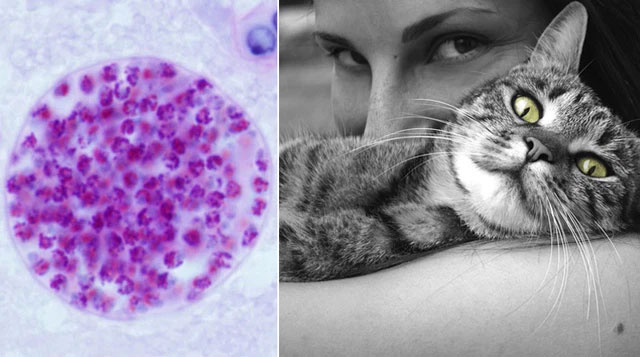
Toxoplasma gondii is a brain parasite transmitted through cat feces that can infect humans. It can cause excessive cat caretaking behavior and lead to various neurological disorders.
Found worldwide, Toxoplasma gondii (T. gondii) is known to have affected 50-80% of the population at some point, according to serological studies. In France, the highest infection rate is observed (84%). It can affect all warm-blooded animals but can only reproduce in cats.
This deadly parasite is known to cause changes in human behavior similar to those in rodents. When infected rodents ingest oocysts (the parasite’s offspring) found in cat feces, the parasite makes them bolder and slower, turning them into easy prey for cats. Worse still, infected rodents become attracted to the smell of cats. Even in humans, those infected find the smell of cat urine “more pleasant” than those uninfected.
In humans, this parasite can cause pathological behavioral changes and severe neurological disorders such as schizophrenia, obsessive-compulsive disorder, aggression, and bipolar disorder. In healthy individuals, it causes mild flu-like symptoms, but in infants and immunocompromised patients, it can lead to a potentially fatal illness known as “toxoplasmosis”. It also makes people love and care for their cats more than usual, which is why toxoplasmosis is dubbed the “Crazy Cat Lady Syndrome”. This may explain why some people are obsessed with cats.
2. Cymothoa exigua
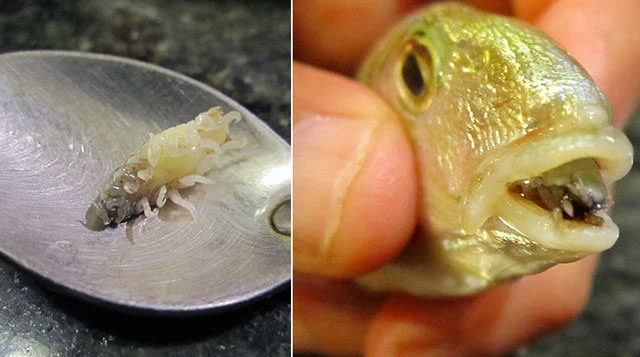
Cymothoa exigua is a parasite that cuts the blood vessels of a fish’s tongue and becomes a new functioning tongue itself. It is the only known parasite capable of replacing an entire organ in its host’s body.
Commonly referred to as “tongue-eating louse,” Cymothoa exigua (C. exigua) enters the fish’s body through its gills. The male attaches itself to the fish’s gill arch, while the female attaches to the fish’s tongue. This parasite, measuring 8-29 mm in length, severs the blood vessels of the fish’s tongue, causing it to atrophy from lack of blood and eventually fall off. C. exigua then becomes the new tongue of the fish, feeding on the fish’s blood and mucus to survive. When the fish dies, it detaches and clings to the outside of the fish’s body.
What happens to the parasite afterward remains to be specifically observed. Another notable feature of this parasite is that, besides being the only known species capable of replacing an entire organ of its host, it also possesses the ability to change sex – males can become females when they reach 10 mm in length.
Found in the southern waters of the Gulf of California to the northern Gulf of Guayaquil, Ecuador, this parasite is also found in the Atlantic Ocean. C. exigua is currently not considered harmful to humans.
3. Phronima

Phronima is a parasite that resembles an alien from the movie Alien (in fact, the alien creatures were inspired by a type of deep-sea parasite that eats other creatures from the inside out and then takes over their bodies to lay eggs).
Phronima adds weight to the saying “truth is stranger than fiction.” In fact, this parasite has inspired many fictional characters in film – the alien antagonist in the Alien series.
Phronima is found in oceans worldwide, except for the polar regions. Females typically attack salps (a type of plankton), using their claws to eat the creature, creating a hollow in the unfortunate animal’s body. It then enters the hollow body of the prey and swims on the water’s surface using it as a means of transportation. The female then lays eggs and nurtures the larvae inside the host’s body. The specific characteristics of Phronima remain poorly understood as it requires study while alive (which is very difficult), making aspects of its life a mystery to science.
4. Spinochordodes tellinii
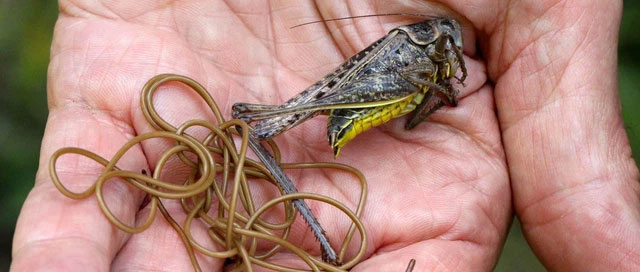
Spinochordodes tellinii is a parasitic worm that develops inside grasshoppers, causing them to jump into water and drown when fully mature.
Spinochordodes tellinii (S. tellinii) is one of the parasitic worms that can grow to be 3-4 times the length of the host grasshopper, entering the host’s body as larvae through ingestion. Eventually, obtaining nutrients from grasshoppers and crickets, they grow to control the host’s behavior. They compel the grasshopper to jump into a body of water and drown. This is done so that they can exit the grasshopper’s body and reproduce in the water.
5. Naegleria fowleri
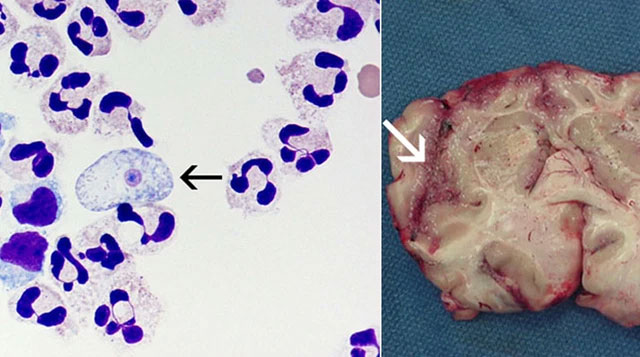
Naegleria fowleri is a freshwater parasite that can invade the human brain through the nasal cavity when swimming in freshwater lakes or poorly maintained pools. This parasite destroys human brain tissue and has a mortality rate of 97%.
Known as “brain-eating amoeba,” Naegleria fowleri is a creature that will make you think twice before diving into the water. Found in lakes and rivers, or in poorly maintained pools, this parasite often targets children and teenagers.
Once infected, the chance of survival is only 3%. It causes brain swelling and leads to “primary amoebic meningoencephalitis,” which can result in death within days. However, infections with this parasite are very rare, and in some cases, they can be treated. Only 34 cases were reported in the United States from 2004-2014. Scientists are concerned that climate change may help this parasite thrive as it grows exceptionally well in warm waters.
Naegleria fowleri can only enter the human body when water penetrates the nasal cavity. It travels along the olfactory nerve directly to the brain. Using its suction cup-like structures, it consumes brain tissue, leading to the first symptoms of infection – loss of smell and taste.
As the infection progresses, it can cause hallucinations, seizures, and confusion. As the body fights the infection, it causes inflammation and extreme pressure on the skull, pushing the brain down, severing its connection to the spinal cord, resulting in death.
6. Acanthocephala
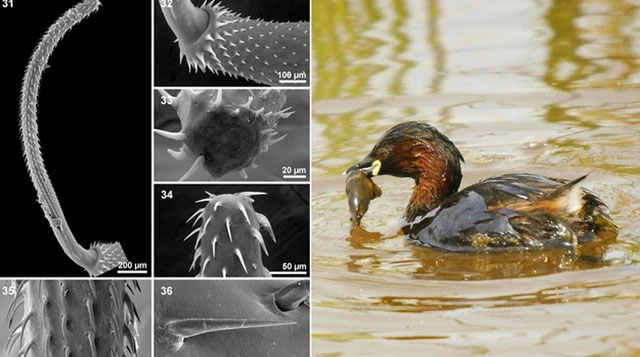
Acanthocephala is a parasite that drives its host to seek death; upon entering the host’s body, they “stimulate” it to swim to the surface to be eaten by ducks.
Also known as “spiny-headed worm,” Acanthocephala has sharp spines on its head, allowing it to penetrate the host’s intestinal wall. Its life cycle is complex and involves at least two hosts, which can be mammals, fish, birds, or amphibians. They begin their life cycle by occupying the bodies of vertebrates living in marine or freshwater environments.
Once infected, the parasite affects the host’s behavior, attracting it to light and causing it to swim to the surface. When the host is eaten by a duck, they continue to thrive and further their life cycle within the duck’s body.
The next host will excrete the parasite’s eggs through its feces, which are then consumed by a crustacean or another arthropod. It develops while inside the intermediate host’s body and matures and mates within its final host (the duck).
7. Pleistophora mulleri
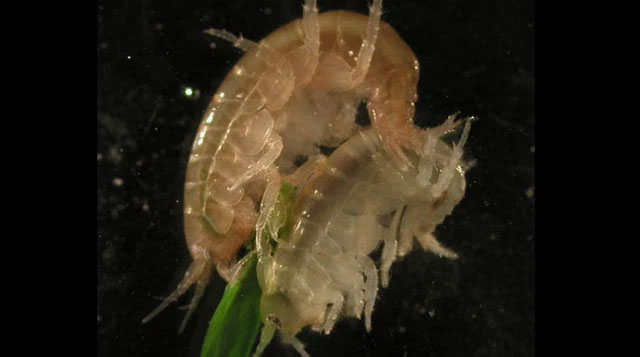
Pleistophora mulleri is a type of parasite that causes shrimp to cannibalize each other more frequently, significantly increasing their ability to consume conspecifics and reducing the time it takes them to consume prey.
This parasite can make the native shrimp, Gammarus dobeni celticus, eat more of its own kind compared to their usual feeding habits. Researchers have found that this parasite significantly enhances the negative traits of the native shrimp and also makes them more voracious, allowing them to consume prey in a much shorter time than those that are uninfected.
8. Nycteribiidae and Streblidae
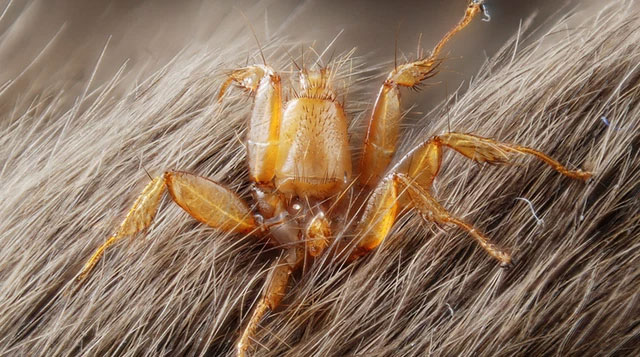
Nycteribiidae and Streblidae are two families of terrifying parasitic species, known as bat flies, that attach to the heads of bats and feed on their blood.
If you think blood-sucking bats are a frightening species, the parasites we mention below are even more terrifying. There are about 275 species in the Nycteribiidae family and 225 species in the Streblidae family that feed on bat blood. Bat flies from the Nycteribiidae family are wingless and resemble spiders, while those from the Streblidae family have wings and can fly. These bat flies, which have evolved over millions of years, spend their entire life cycle clinging to the bodies of bats, especially their fur and wings. Researchers believe that 20 million years ago, before these flies evolved, they fed on the sweat, feces, and dead skin of bats. As blood-sucking parasites, they will starve if separated from their host—dying just two days after detaching from a bat’s body.
9. Ribeiroia ondatrae
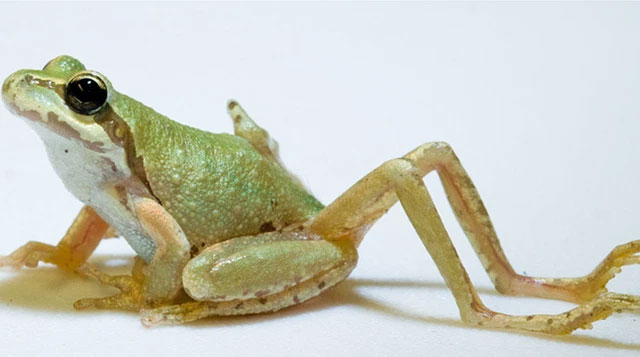
Ribeiroia ondatrae is one of the most horrifying parasites on the planet. It causes infected frogs to develop deformities such as extra limbs protruding at odd angles, affecting their mobility and putting them at risk from predators.
As a type of flatworm parasite, Ribeiroia ondatrae typically infects frogs during their limb development stage, leading to various deformities in amphibians, such as missing limbs or extra limbs sprouting in unusual locations on their bodies.
This makes it difficult for frogs to move and easy prey for predators. This parasite poses a serious threat as it continues to spread and can also inhabit areas where endangered or threatened species form habitats. Scientists have attempted to predict where these deformity-causing parasites might exist to prevent further harm to wildlife.
The life cycle of this parasite begins with a giant snail, where it reproduces asexually, turning the snail into a “parasite factory.” Hundreds of parasites are released by the snail each night to seek their second host, which are tadpoles. The tadpoles grow into deformed frogs and are quickly eaten by birds. The birds serve as the third host. The parasites reproduce inside the birds, and their eggs are released through the birds’ feces, repeating the cycle.
10. Diplostomum pseudospathaceum
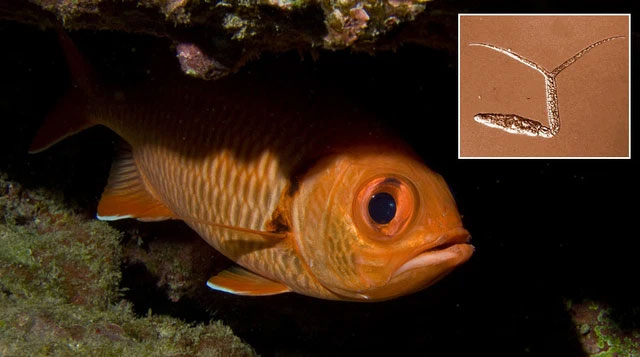
Diplostomum pseudospathaceum is a type of parasite that lives inside the eyeballs of fish and controls their behavior. When young, this parasite protects the fish. However, as it matures, it will do everything it can to kill its host.
Diplostomum pseudospathaceum is a parasite that alters its host’s behavior to suit its needs. It begins its life cycle with a snail, then finds its way into the fish’s eyeball by penetrating the fish’s skin in the water and hiding until it matures.
When it is young, it protects the fish so that it can grow, but once mature, it will do everything possible to make the fish change its swimming behavior, leading to its predation by birds to continue its life cycle inside the bird’s body. The parasite mates in the bird’s digestive tract, and its eggs are excreted through feces like many other parasites.
A study in 2015 revealed that fish infected with immature parasites swim slower than uninfected fish, making them less visible to predators. It was also noted that fish infected with mature parasites swim much more actively than those that are uninfected.


















































